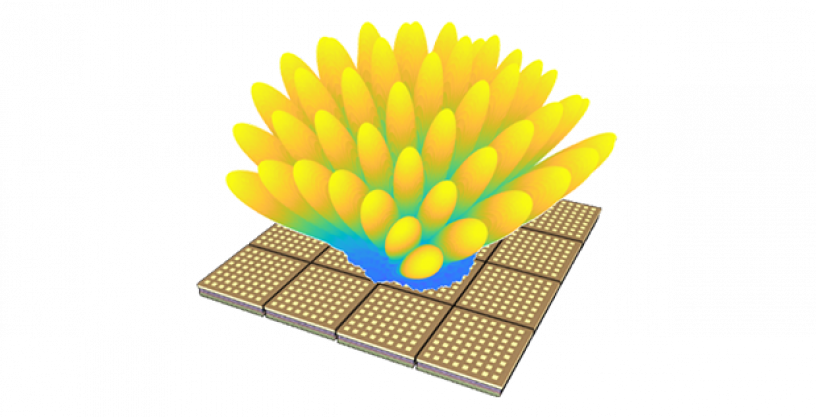Summary
There is increasing interest in making broader use of the millimeter wave frequency band for communications on small mobile platforms where narrow antenna beams from small radiating apertures provide enhanced communication security.
Today’s millimeter wave systems, however, are not user friendly and are designed to be platform specific, lacking interoperability and are thus reserved for only the most complex platforms. To expand the use of millimeter wave phased-arrays and make them broadly applicable across Department of Defense (DoD) systems, many technical challenges must be addressed, including wideband frequency coverage, precision beam pointing, user discover and mesh networking.
The goal of the Millimeter-Wave Digital Arrays (MIDAS) program is to create the digital array technology that will enable next-generation DoD millimeter wave systems. The program seeks to develop element-level digital beamforming that will support emerging multi-beam communications and directional sensing of the electromagnetic environment in the 18-50 GHz band.
To accomplish its goals, MIDAS is focused on two key technical areas – one that addresses the development of core CMOS chips, and a second that seeks to integrate those CMOS chips with the rest of the aperture. The challenge associated with developing the CMOS chips is achieving the very low power consumption needed, but with a large amount of RF, mixed-signal, and digital functionality integrated into a very small space.
The second challenge is to implement the low-noise amplifiers, power amplifiers, transmit/receive switches, and antenna all with high efficiency and compact chip-scale assembly techniques. Achieving both of these goals will result in a 16-element tile building block that can be used to form larger apertures.
In the third phase of the program, the focus will be on the creation of a 256-element array that is composed of the MIDAS tile building blocks and is capable of demonstrating digital multi-beam functionality over the full band of interest.

